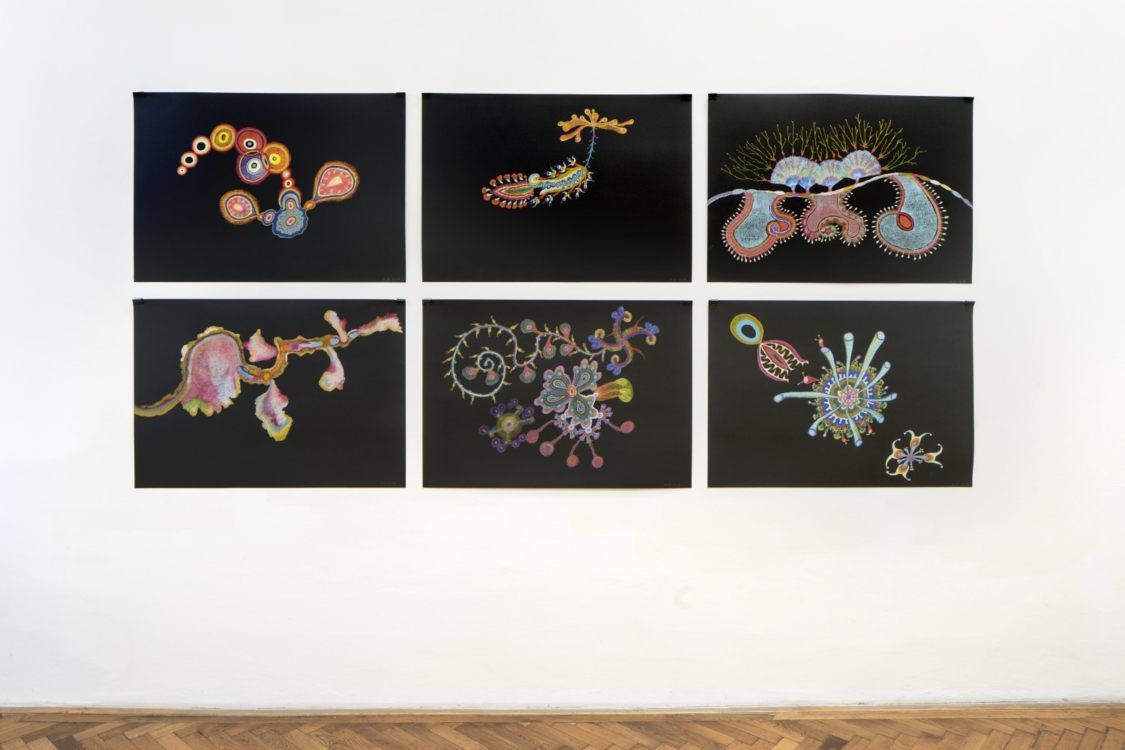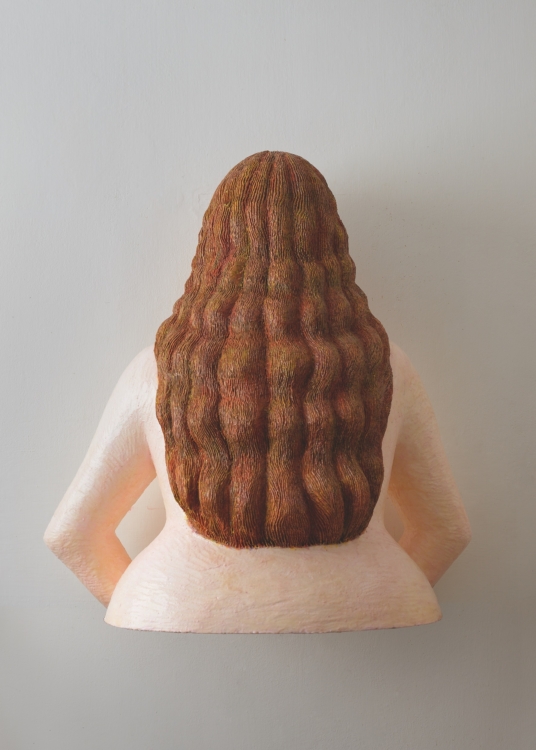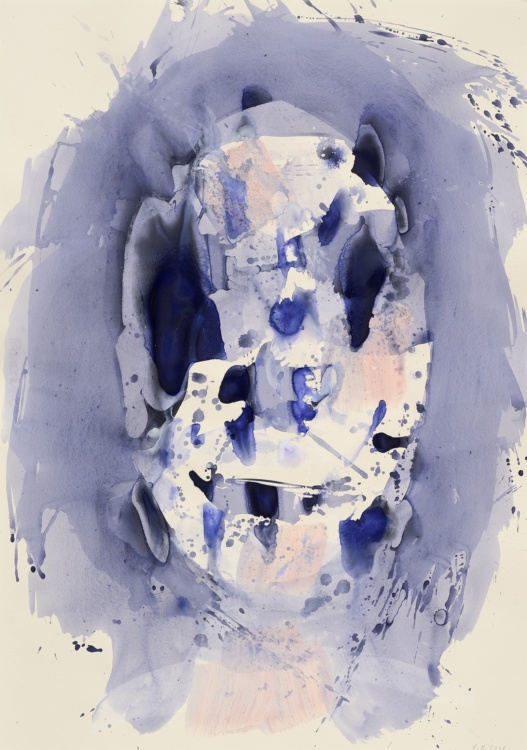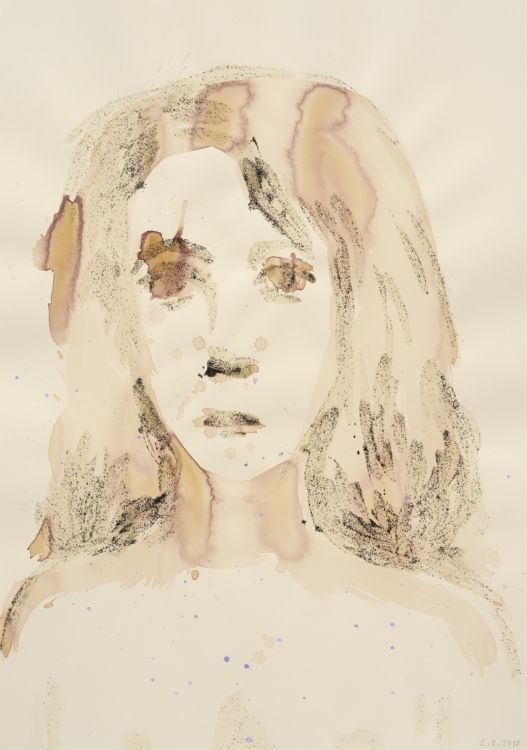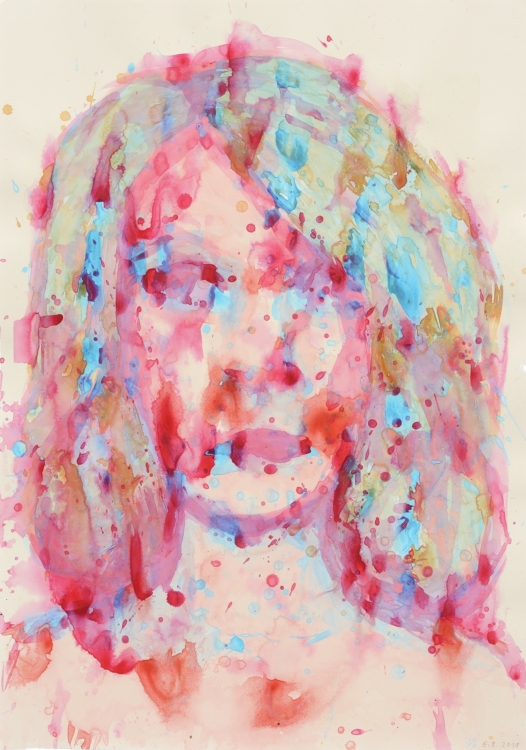M P Rainer Maria Rilke and Alma Mahler – two different and quite complicated destinies connected with Central European culture and society at the turn of the 19th and 20th centuries. Moreover, the title of the exhibition Madness is the Guardian of the Night refers directly to one of Rilke’s poems. In your exhibition, you dedicate two rooms to these generationally related figures. Why to them?
E B They both belong to our cultural history, which was not only Czech, but also German and, of course, Austrian. My paths and theirs have been somehow crossing for a long time. I was focusing on the French sculptor Camille Claudel and on Sidonie Nádherná a few years ago, and Rilke figured in the lives of both of these women. In 1902, he travelled to Paris to write a paper on Auguste Rodin, whose muse was Claudel. He also became Rodin’s secretary, and in this – to me somewhat strange – position he also visited Sidonie’s place in Vrchotovy Janovice. Sidonie charmed Rilke and became his muse. Rilke introduced me to Alma Mahler, who composed songs based on his poems, and Rilke also met her future husband, Franz Werfel, during the war while they were working in the Vienna War Archives to avoid the battlefield. Rilke and Alma lived at the same time, but otherwise they were completely different (except that they had a very lively love life). Rilke was gentle and intelligent, but also a fragile and unbalanced man who was supported and nurtured by women. Alma was the femme fatale of the time – beautiful, desirable, but at the same time talented, which made men both love and fear her.
For the character of Alma, who is surrounded by the key men of her life in the installation, I was inspired by a story about one of them – Oskar Kokoschka. He loved Alma very much. When she left him, he had a life–size doll made for him in her likeness; he took it with him everywhere before it was reportedly destroyed by fire. That’s why I only carved the levitating Alma from the back – she’s only half real. I’ve made her partners a bit like toys: they’re carved out of rigid polyurethane foam, a brittle material that slowly turns yellow and which, over time, transforms into something like a sea sponge.M P The allusion to the sea sponge – which, by the way, is a marine animal, not a plant – is actually quite strange. Polyurethane foam as an insulator is synthetic but it is produced on an organic basis. Why have you been choosing materials for years that are quite non-sculptural, and also made chemically?
E B Right at the beginning I worked with polystyrene; I started with it about thirty years ago. The reason was actually quite prosaic. I wanted to carve large sculptures, but, with a studio on the sixth floor, it was impossible to do so using conventional sculptural materials. And polystyrene is light! For years, I’ve carved some kind of fragile monuments out of it, combining it with other materials and colouring it. Moreover, I could manipulate my pieces myself and was not dependent on the help of others. The surface of polystyrene sculptures can be preserved well, so they will definitely outlive us – in this respect they are similarly durable to those made of traditional materials. The same goes for polyurethane foam sculptures, they are strong but lightweight. At the same time, with PU, I enjoy not only the changing colours, but also the specific texture. It feels nice when you touch it and is warm.
M P A significant segment of your exhibition at the Colloredo-Mansfeld Palace consists of self-portraits painted on paper. They were created at a time when you were suffering from partial loss of sight in one eye. You nevertheless used your – fortunately temporary – disability in a creative way. How do you perceive this experience in retrospect?
E B My eye ruptured when I was working on a sculpture of Alma Mahler. I never thought I would ever do self-portraits in my life, and with such compulsion to boot. When I suddenly saw everything through a brown blur, and straight lines and partly even colours disappeared out of the blue, like anyone else probably would, I panicked that I would never see again; with my healthy eye I read diagnoses on the Internet that were not favourable at all. In this distressing situation, I made it my daily task to look in the mirror to capture my appearance, which was necessarily distorted and blurred due to the loss of sight, and also depending on my current feelings. A kind of a diary entry was created. But I also saw it partly as therapy. I went from initial frustrating states to joyful moments of discovering new forms of myself. When I started to see again, the interest in my own face left me.
M P Recently, you caused surprise not only by starting to paint again after many years, although you established yourself on the art scene mainly as a sculptor. Your move from humans to nature is also unexpected. What fascinates you about underwater flora and fauna?
E B It was actually a reaction to the loss of sight I mentioned before. When I suddenly saw the world again in all its colourfulness, I felt the need to capture all its beauty, which is of a completely different nature to beauty as human society perceives it. From my studio in the apartment building, apart from concrete, roofs and the “Pakul” [Congress Centre], there is no nature to be seen at all. On the one hand, nothing distracts me from my work, but on the other, I miss nature more and more. That’s why I started to draw the world of underwater plants, rich in colours, and to develop their forms a bit in my imagination.
Subsequently, marine invertebrates – tiny, sometimes even microscopic animals – were added. So the Plants and Water Creatures cycles are a little bit real and a little bit imaginary. I drew them mainly in oil pastel on a black surface, so that the colours and the bizarre shapes of the plants would stand out. I was fascinated by nature’s “aesthetics” but increasingly wanted to get beneath the surface of the forms and understand the workings of nature from a scientific point of view as well. That’s why I joined Sir David Attenborough’s fan club. It’s true that his work is very much focused on popularising, but I think it’s important. I also started to visit various scientific websites that provided – and still do – important information on freshwater and marine invertebrates, such as radiata, siphonophorae, cephalopods, cnidaria… I was inspired by jellyfish, blue bottle jellyfish, hydras. In addition, there are other species of these remarkable creatures being discovered that do not yet have names. Others, however, are sadly disappearing irretrievably, as are many other, larger and more “visible” species.M P Your concern undoubtedly has ecological overtones as well.
Yes, I am concerned about the devastation of our planet and my “natural history” cycles also respond to it. When our family relocated to the Šluknov Hook region during the Covid pandemic, I watched from my windows as trucks took away felled trees every day. Where there used to be dense forests, there are now bare hillsides. The sad feeling of irreplaceable loss gave rise to the longest drawings that I now exhibit at the GHMP. Spring 2020 is more than seven metres long. The destruction of nature and climate change is a scourge that affects us all.

